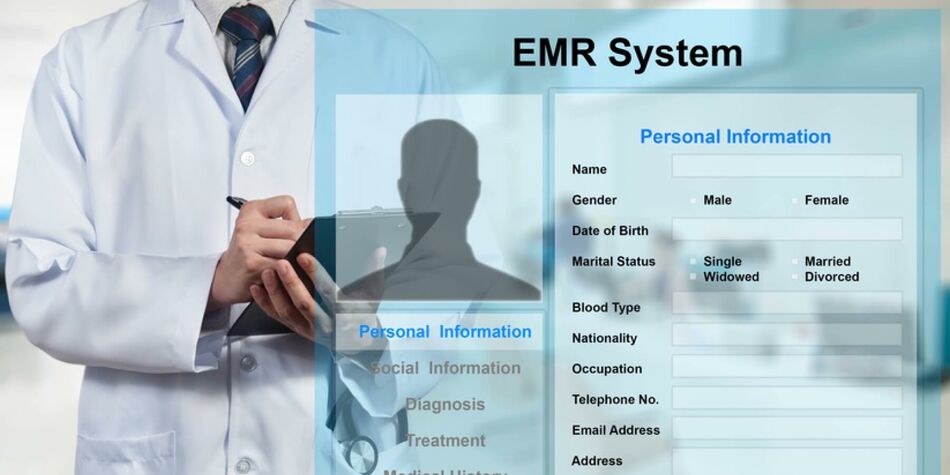The Importance of Healthcare Data Analytics in EMR

The adoption of electronic health records (EHR) and later electronic medical records (EMR) has been increasing recently, particularly in view of the requirements of Meaningful Use of patient data. Yet, much of the data contained in EHRs and EMRs is an unused asset. Why?
Reasons EHRS and EMRS Lack Health Data Analytics
The design of EMRs and EHRs is not meant for any data analytics and medical data analytics in particular.
The amount of data stored in electronic health records (EHRs) is tremendous, yet not all information stored by health care organizations is useful. Indeed, the biggest part of the clinical data is not used because there are no tools for data mining and data integration. EMR data analytics integration from various sources into an interface providing meaningful use of EMR data is a goal HCOs should achieve to ensure effective business processes.
There are no adequate resources and skills to integrate data analytics in EHR.
As a rule, electronic health record systems aren’t designed to integrate medical datasets from other sources or to manage data, i.e. there are no appropriate tools for these tasks. Thus, effective integration tools are necessary to streamline health information processing, though in-house IT departments in HCOs seldom have enough time and resources to develop custom solutions.
EMR and EHR interfaces are not user-friendly or intuitive.
There are a lot of complaints from doctors and HCOs management teams about the excessive time spent on filling all forms and extracting all the information they need. According to Connected Care Watch, “primary care providers are spending more time entering and staring at EHR data than interacting with patients in their presence”. The cited study reveals that time-consuming interaction with EHRs contributes to work-life imbalance, dissatisfaction, high rates of attrition, and burnout rates exceeding 50 percent.
As we can see, to provide value-based care, HCOs need EMR systems that can capture data, process it and give it back in a visible and easy-to-understand interface. Data visibility is crucial for the effective functioning of healthcare providers and improving the clinical, operational, and financial outcomes of the organization. What can be done to solve these problems in custom healthcare solutions?
What Can HCO Do to Transform Patients Data in EHR Into Meaningful Analytics?
The key to effective and meaningful data analytics is the right tools. The right tools allow analyzing data, as well as patient records, and discovering insights that help provide better care and improve the business process.
The Health Catalyst analyst says there are 3 common stages data goes through before it can be used in healthcare data analytics:
1. Data capture where the data is acquired and data quality is assured.
2. Data provisioning where the data is moved to your data warehouse and visualization for clinicians is built.
3. Data analysis itself where the data is interpreted, mined, and evaluated.
Let us explore how an HCO can optimize its healthcare data analytics process.
First of all, provide your analysts with a data warehouse. An Enterprise data warehouse aggregates all your data across the system and allows it to be found in one place. A data warehouse makes manual access unnecessary, bringing data together and includes important attributes such as metadata, security, auditing, and common linkable identifiers.
At that, your analysts must have full access to the testing environment as a data warehouse is their tool which they should use in the manner they need to store the large amounts of data they need.
It should be mentioned that your HCO has to leverage a complete data set from the entire organization, including all sources of valuable data such as EMRs. And you have to visualize the combined complete data to be able to represent it to all stakeholders who may need it.
And then, you have to provide your analysts with the necessary data discovery tools to explore the data, find trends and correlations and to make forecasts. The right tools should enable your analysts to view and analyze data in real-time, make reports and get insights.
Predictive analytics based on complete and relevant EMR data can provide:
- More accurate diagnoses
- Improved public health and preventive medicine
- Decreased healthcare costs
Now let’s try to find out how data analytics can be integrated into EMR.
EMR Data Analytics Challenges
- One of the greatest challenges about medical data in compliance. The healthcare industry is strictly regulated by numerous standards and requirements. You should always consider compliance requirements, such as HIPAA, HL7, etc.
- The next challenge is the multiple EMR systems and the extraction of meaningful data out of them. As a rule, these systems lack the interoperability and reporting capabilities necessary to extract data. Legacy health records, ePHI, financial data, and other structured and unstructured data have to be converted into the EMR you use for data analysis.
Steps to Overcome Data Analytics Challenges
- Assess your systems, analyze your data security procedures, and audit the coding in compliance with all the regulatory requirements.
- Adopt a strategy to integrate the data in such a way as to ensure value-based care for your patients.
- Set up a team of professionals that have the necessary skills in development and deployment for healthcare-specific systems and applications.
Benefits of EMR Data Analytics
- Embedding analytics into the EMR enables HCOs to eliminate the gaps in documentation, coding, and quality.
- The data obtained directly from the EMR provides insights into ways to advance healthcare services delivery based on individual approaches to every patient.
- Analytics enables greater efficiency and care coordination and reduced administrative demands on your staff.
Cprime is a professional service and custom software development consulting company with profound experience in the healthcare domain, both in the field of software development and software integration.
